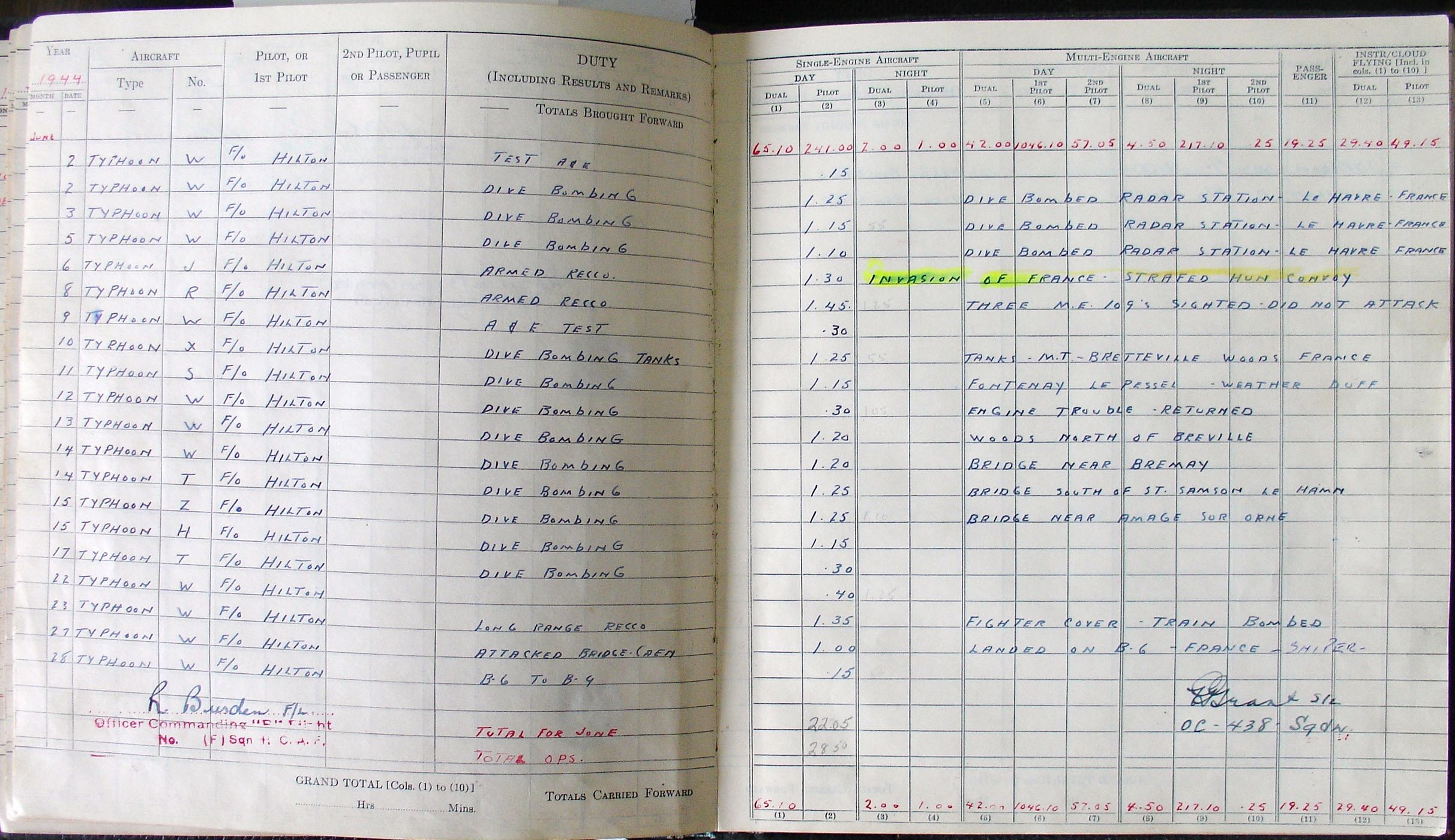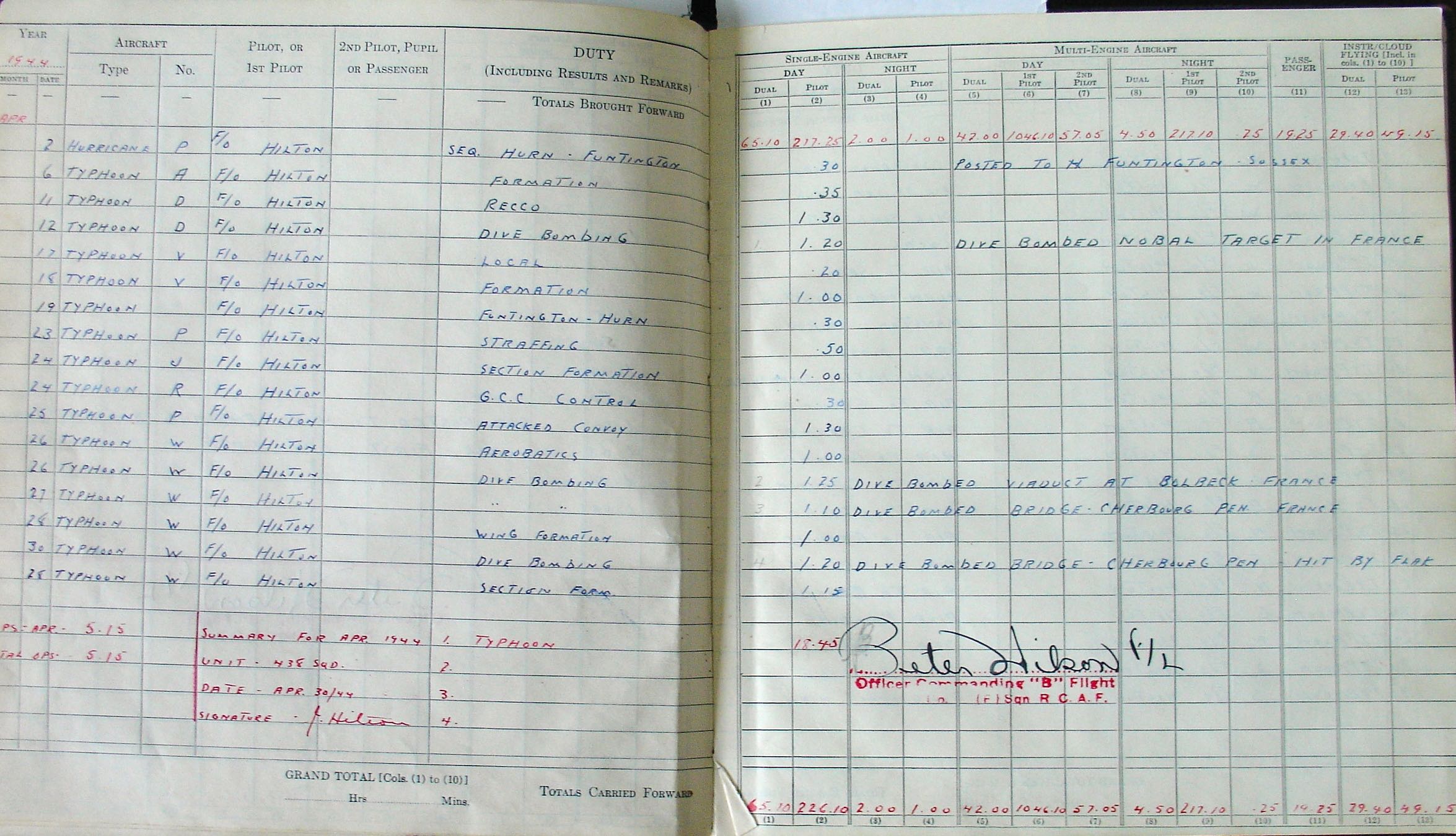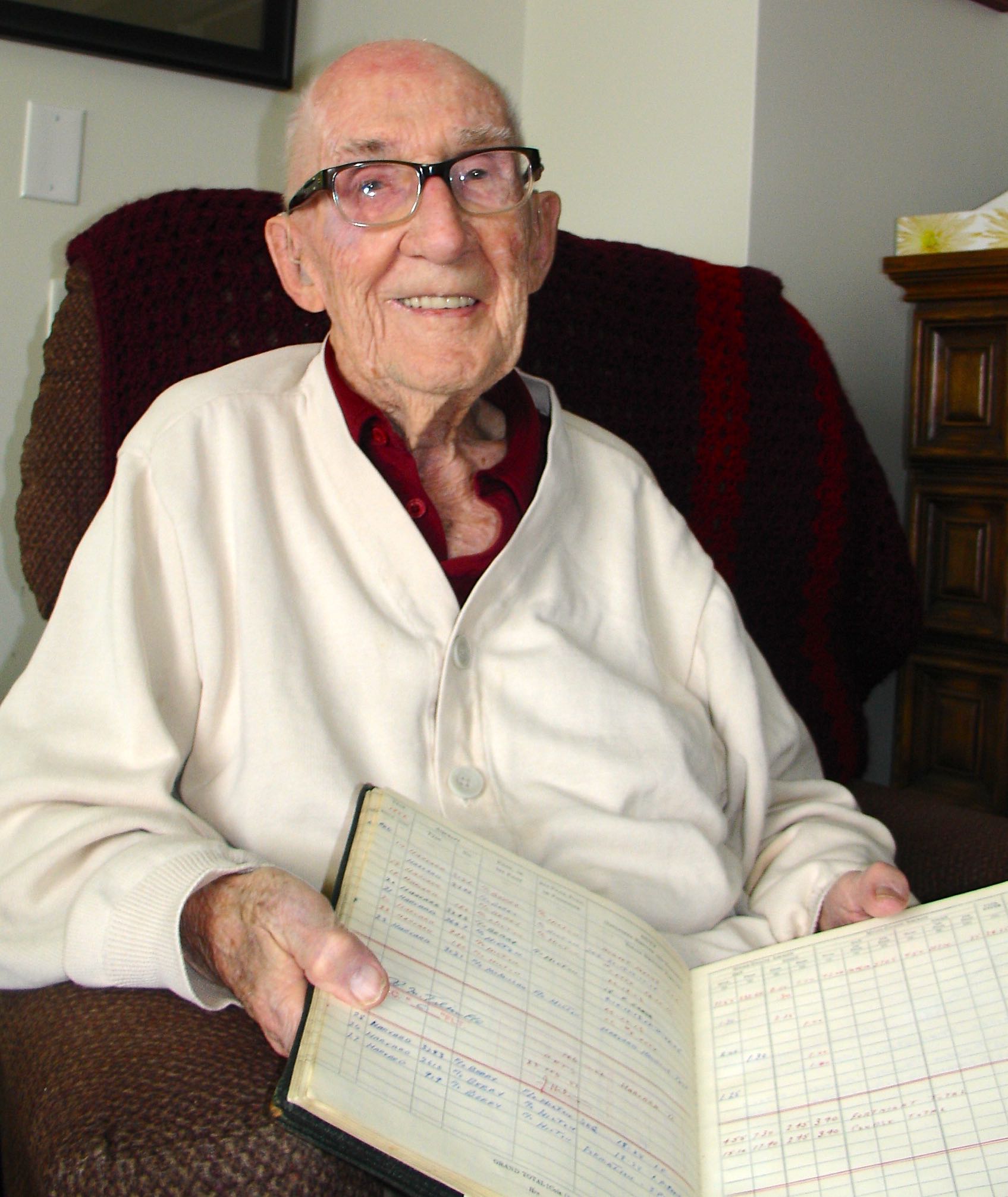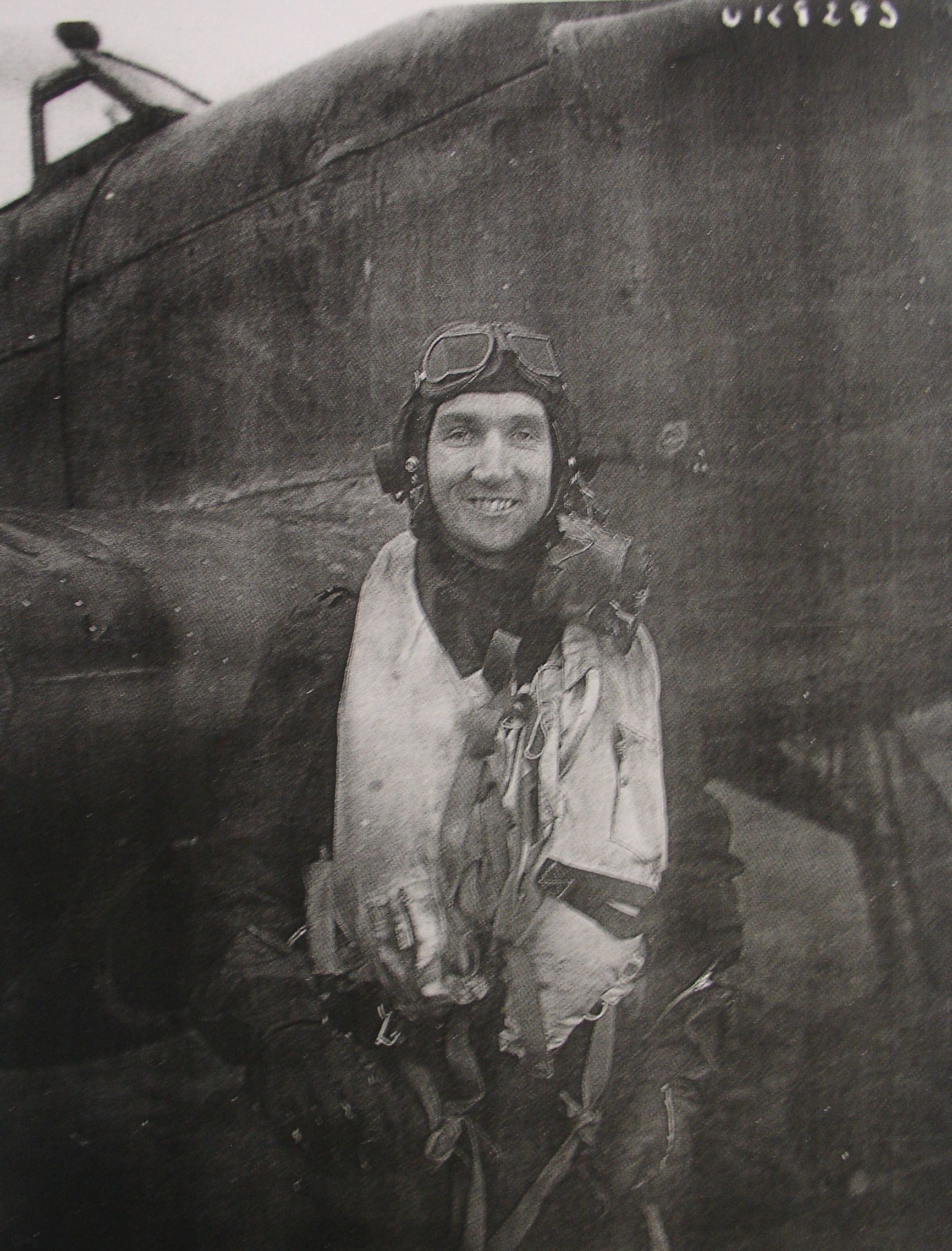



April 1919 to March 7, 2019




Jack Henry Hilton was born in Scarborough, Ontario in April 1919. At age 19, he joined the RCAF.
Jack shared stories with me (Anne Gafiuk) in 2017 and 2018 about his time flying the Typhoon.
"I flew about 100 operations. There was a demand to fly the Typhoon. They were desperate, just screaming for pilots to fly the Typhoon. We had a special job: to escort the army and back them up. It was a coordinated effort. The Typhoon did the job! We were low level. We would fly 100 - 200 feet off the ground to attack our targets: tanks, convoys, trains. Every time we went in, they were shooting at us. No free lunch! Double jeopardy all the time. When the German army was retreating at Falais Gap, we were attacking troop carriers with 30 -40 men in them. When you fire at them, you are going to hit something! But you rationalize, otherwise you will go crazy. I looked at my logbooks and I flew 28 ops in 30 days. Imagine the pressure on the pilots to take off and land. D-Day, we were right up to our ears. Flying 150 feet over the water, the spray of the water was hitting our airplane. It was a desperate situation."
"We had two squadrons (RAF) with rockets. They were a fierce outfit. They had the same fighting power as a British cruiser: 25-pound warheads, four under each wing. They could take a tank and low it apart. It scares the living bejesus out of me when I read about it. In the beginning, they were very hard to control. They had pigtails that clipped underneath the airplane; the airmen would be running to plug them in; when we turned on the runway and turned out our radio, the rockets took off all over the place!"
"The Typhoon killed a lot of pilots at the beginning: the tail fell off, the engine quit; when the engine quit in the Typhoon it was nothing but going down. The Typhoon had such a high wing loading that you had no room for safety and turns. You had to turn when you were in a fight. We tangled with the Messerschmitt -- about 100 of them. We could dive down and beat them in the dive, but when we got to low level at high speed, we could not turn. We did not have the radius to get inside them to shoot them. The only thing we had going for us in the Typhoon was to go straight at the target, faster than the enemy could go and then get the hell out of there! You did not have a margin of error down low. You could not get a Typhoon below 110 mph. This makes a difference in a turn and the turn is the secret in fighting with the German fighters. The Typhoon was originally made to combat the Messerschmitt 190. But they found we could not turn. As I pulled tight turns at 150, the darned thing would spin on me and I would dive straight into the ground. I had no safety margin. It was one of these questionable things."
"You hit the target and got the hell out. Your speed was the only thing you had. Better than the others. One of our guys tried to stay in it and didn't come back. Three of the four of us came home. We always went out in two groups of two. We were very tired with an average of 2 hours a trip from start to finish. Sometimes I did two operations a day. There is no second chance. Get in and get out. You don't go back for a second look. I never went back for a second look. Those who did: never came home. You are shot at going in and shot out going out. You don't go back for seconds! When we did the dive-bombing, so often you did not see what you hit. You don't look back. If you do, you are shot out of the sky. We'd go in at 500 or 550 mph; that's fast for a prop airplane. At 20,000 to 30,000 feet, we were bombing around the air. No one could catch us when we went into a dive."
Jack tells another story about one Typhoon pilot who conducted an experiment. "One of our fellows took one of our Typhoons up to 30,000 feet and he put it into a spin. It took him to 5000 feet before he got out of it! The tail was too small. The weight was too heavy. There was no room for error."
Jack recalls The Battle of the Bulge. "We caught about 150 Messerschmitts at the Battle of the Bulge. The battle was just about at the end of the war. We were above the Germans and they were below us. So we went through them. 'One pass and run for home,' said our Squadron Leader."
Jack wrote his biography entitled The Saga of a Canadian Typhoon Fighter Pilot in 2015. More details about his time in the RCAF during WWII can be found within its pages.
LINKS: